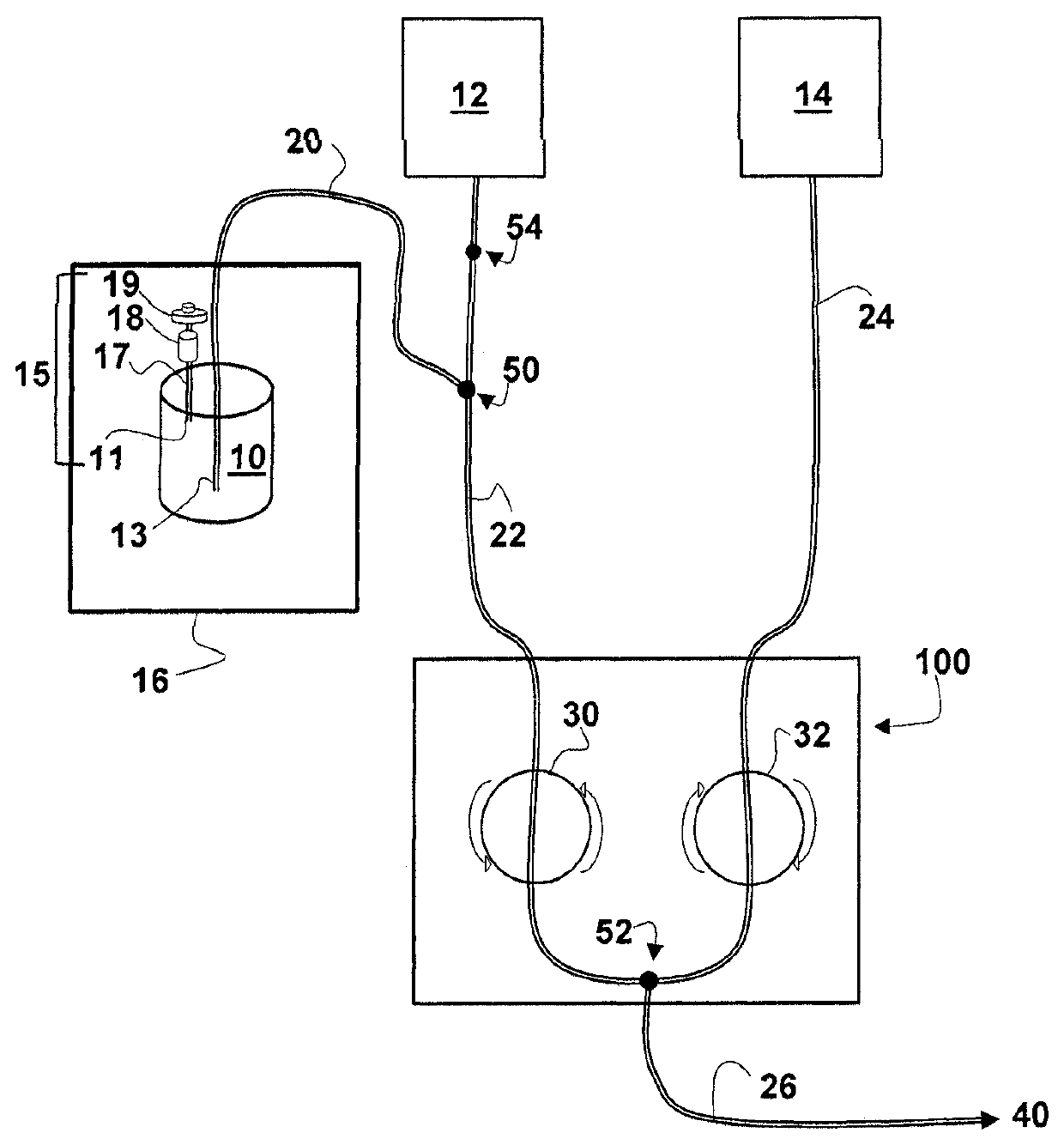Infusion administration of conjugated monoclonal antibodies
a monoclonal antibody and conjugated monoclonal technology, applied in the direction of antibody medical ingredients, drug compositions, peptides, etc., can solve the problems of increasing the risk of administration errors, unused radiation doses continue to present exposure risks to medical personnel and patients, and the unused radiation dose is not only expensive, so as to reduce waste and risks, the effect of reducing the exposure of medical personnel to agents
- Summary
- Abstract
- Description
- Claims
- Application Information
AI Technical Summary
Benefits of technology
Problems solved by technology
Method used
Image
Examples
example 5
ation of BC8-Paclitaxel
[0118]A Therapeutic dose of a patient specific therapeutic composition comprising paclitaxel conjugated BC8 (Paclitaxel-BC8) and unlabeled BC8 is formulated as a 45 mL ready to administer, parenteral formulations in a 50 mL glass vial, and is stored at −20° C. All dilutions to formulate the therapeutic dose are performed during manufacture of the patient specific therapeutic composition from stocks of BC8 and Ricin-BC8. Total protein amounts for the monoclonal antibody are as described in Example 1. Doses of the effector molecule paclitaxel are in the range of 15 to 275 mg / m2 (total surface area of the patient). Storage, thawing, and infusion are as described in Example 1.
Example 6—Administration of 131I-HuM195
[0119]Dosimetric and therapeutic doses of a patient specific therapeutic composition comprising 131I-HuM195 and HuM195 were formulated as 45 mL ready to administer, parenteral formulations in a 50 mL glass vial, and were stored at −20° C. All dilutions t...
example 7
ation of HuM195-Calicheamicin
[0120]A Therapeutic dose of a patient specific therapeutic composition comprising calicheamicin conjugated HuM195 (calicheamicin-HuM195) and unlabeled HuM195 is formulated as a 45 mL ready to administer, parenteral formulations in a 50 mL glass vial, and is stored at −20° C. All dilutions to formulate the therapeutic dose are performed during manufacture of the patient specific therapeutic composition from stocks of HuM195 and calicheamicin-HuM195. Total protein amounts for the monoclonal antibody are as described in Example 1. Doses of the effector molecule calicheamicin are in the range of 1 to 10 mg / m2 (total surface area of the patient). Storage, thawing, and infusion are as described in Example 1.
example 8
ation of Anti-CD20-Epithilone
[0121]A Therapeutic dose of a patient specific therapeutic composition comprising epithilone conjugated anti-CD20 (epithilone-anti-CD20) and unlabeled anti-CD20 is formulated as a 45 mL ready to administer, parenteral formulations in a 50 mL glass vial, and is stored at −20° C. All dilutions to formulate the therapeutic dose are performed during manufacture of the patient specific therapeutic composition from stocks of anti-CD20 and epithilone-anti-CD20. Total protein amounts for the monoclonal antibody are as described in Example 1. Doses of the effector molecule epithilone are in the range of 10 to 20 mg / m2 (total surface area of the patient). Storage, thawing, and infusion are as described in Example 1.
[0122]Each of the characteristics and examples described above, and combinations thereof, may be said to be encompassed by the present invention. The present invention is thus drawn to the following non-limiting aspects:
[0123](1) A patient specific ther...
PUM
| Property | Measurement | Unit |
|---|---|---|
| total volume | aaaaa | aaaaa |
| total volume | aaaaa | aaaaa |
| total volume | aaaaa | aaaaa |
Abstract
Description
Claims
Application Information
 Login to View More
Login to View More - R&D
- Intellectual Property
- Life Sciences
- Materials
- Tech Scout
- Unparalleled Data Quality
- Higher Quality Content
- 60% Fewer Hallucinations
Browse by: Latest US Patents, China's latest patents, Technical Efficacy Thesaurus, Application Domain, Technology Topic, Popular Technical Reports.
© 2025 PatSnap. All rights reserved.Legal|Privacy policy|Modern Slavery Act Transparency Statement|Sitemap|About US| Contact US: help@patsnap.com

